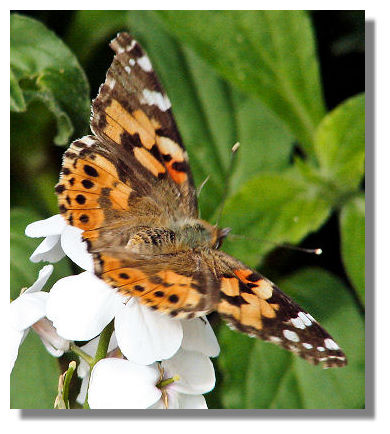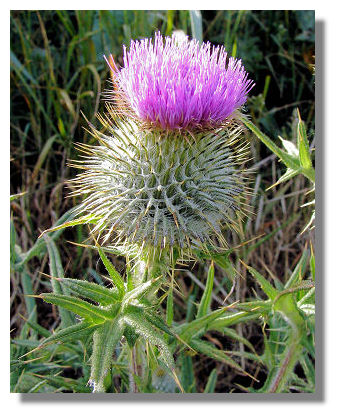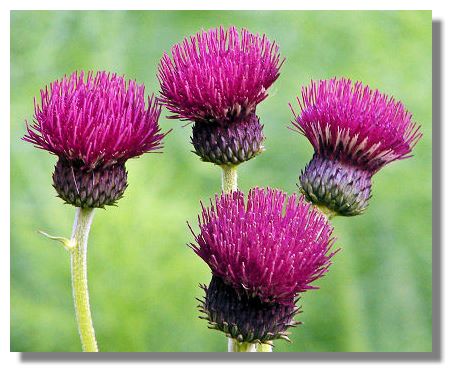Each week the Rampant Scotland Newsletter includes a number of photographs which illustrate the weather, flora and fauna of the current week around Scotland. There are so many such graphics worth including that a separate "colour supplement" is created so as not to totally overload the Newsletter. Here is this week's crop!
The lobster pots in the harbour seem to be colour co-ordinated with the pretty fishing village of Anstruther in the East Neuk of Fife. Even the imported sand matches the colour scheme!
Each year, the Painted Lady butterfly spreads northwards from the desert fringes of North Africa, the Middle East, and central Asia and flies across Europe - eventually reaching Scotland. This one was spotted in the walled garden of Kellie Castle in Fife.
The flowers of Astrantia are actually very small and look more like stamens, surrounded as they are by papery bracts behind. They often do well in shady areas as they prefer a lot of organic material in the soil.
The blue Himalayan Mecanopsis is the most popular variety of this member of the poppy family. But Mecanopsis also come in yellow, red, pink and purple - as well as white. This one was photographed growing in the garden of Kinross House earlier this week.
Adult Lapwings begin to moult in June but this one, at the RSPB reserve at Vane Farm, near Loch Leven, still has its sweeping crest prominently on the back of its head.
Although thistles can be found all across the UK and Ireland, it has become particularly associated with Scotland as our national flower.
Cirsium is a form of thistle that is often cultivated in gardens. Unlike its wild flower relatives, Cirsium does not have the rampant growth and the desire to spread all over the garden.
If you want to look back at earlier editions of this Colour Supplement, there is an Index Page










